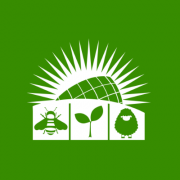One Stone; Two Birds: Concurrent Pest Control and Pollination Services Provided by Aphidophagous Hoverflies
Biological pest control and pollination are vital ecosystem services that are usually studied in isolation, given that they are typically provided by different guilds of arthropods. Hoverflies are an exception, as larvae of many aphidophagous species prey upon agriculturally important aphid pests, while the adults feed on floral nectar and pollen and can be effective pollinators of important agricultural crops. While this is widely known, the concurrent provisioning of pest control and pollination by aphidophagous hoverflies has never been studied. Here, we compared the potential of two aphidophagous hoverflies, Eupeodes corollae and Sphaerophoria rueppellii to concurrently control the aphid Myzus persicae and improve pollination (measured as seed set and fruit weight) in sweet pepper (Capsicum annuum). In a first semi-field experiment, aphid populations were reduced by 71 and 64% in the E. corollae and S. rueppellii treatments, respectively, compared to the control. In a second experiment, the aphid population reduction was 80 and 84% for E. corollae and S. rueppellii, respectively. Fruit yield in aphidinfested plants, was significantly increased by 88 and 62% for E. corollae and S. rueppellii, respectively, as compared to the control. In a separate trial, where the plants were not infested with aphids, yield increased by 29 and 11% for E. corollae and S. rueppellii, respectively, even though these differences were not statistically significant. The increase in seed set in the hoverfly treatments was statistically significant in both pollination experiments, i.e. independently of the presence of aphids. These results demonstrate, for the first time, that aphidophagous hoverflies can concurrently provide pest control and pollination services.



